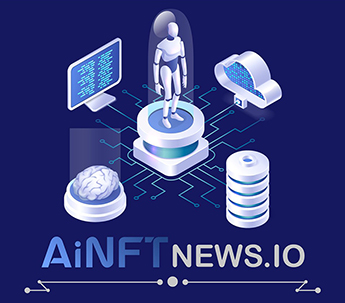In recent years, NFTs have evolved from a niche digital asset to a multi-billion-dollar market.
At the height of their popularity, NFTs captivated collectors and investors with the promise of owning unique digital assets, often commanding multimillion-dollar sales. However, as the initial excitement fades, many of these digital tokens are struggling to maintain their value.
The main issue has become clear: relying solely on the appeal of a digital image or collectible is not enough to sustain long-term worth. As the market has cooled, the concept of “utility”—offering added benefits beyond the digital artwork itself—has become crucial for NFTs to maintain relevance and value.
What are NFTs?
NFTs are digital assets that exist on a blockchain, making them unique and distinct from other digital assets like cryptocurrencies.
Unlike Bitcoin, which is identical in every instance, each NFT is one-of-a-kind and cannot be replicated. These tokens can represent a wide variety of assets, including digital art, music, videos, and even physical items.
Whilst NFTs have been around since 2014, their mainstream popularity skyrocketed in the wake of the COVID-19 pandemic, when high-profile projects like the Bored Ape Yacht Club and the incredible $69 million NFT sale of Beeple’s artwork drove attention to the space.
 Source: Beeple
Source: BeepleThe NFT Market Decline
At the peak of the NFT boom in 2021, the market was valued at around a staggering $41 billion, rivaling traditional fine art sales.
This rapid growth was fueled by a speculative frenzy and the idea of owning a unique digital piece. However, as more creators entered the space and the market became flooded with new projects, the initial excitement began to wane. Many NFTs that were once highly sought after saw their prices plummet, as collectors moved on to newer trends and the market became saturated.
The decline in NFT prices mirrored the broader downturn in the cryptocurrency market, signaling that NFTs were facing challenges beyond just market speculation.
The Role of Utility in NFTs
In response to the declining market, the concept of utility began to take shape.
Utility refers to the additional benefits that come with owning an NFT — beyond the simple concept of digital ownership. These benefits can range from access to exclusive content, participation in members-only communities, or even real-world experiences. One of the most notable examples of NFTs with utility is the Bored Ape Yacht Club (BAYC).
Holders of BAYC NFTs receive access to a variety of exclusive perks, including special events, merchandise, and even the ability to participate in unique collaborative projects. This shift towards NFTs with utility has become a key factor in maintaining their value.

 Source: Bored Ape Yacht Club
Source: Bored Ape Yacht ClubExpanding NFT Use Cases
NFTs are no longer confined to the world of art; they have found applications in areas like gaming and virtual real estate, where their utility extends beyond just ownership. In the gaming world, NFTs serve as in-game assets, such as characters, weapons, or land, that players can use to earn rewards. Games like Axie Infinity allow players to buy, sell, and use NFTs in gameplay, earning cryptocurrency in the process.
One recent example is the Summoners NFT collection by Funtico, which provides holders with exclusive privileges within its play-to-earn gaming ecosystem. Owning a Summoner NFT allows players to join the Funtico Leaderboard, earn additional $TICO tokens through gameplay, and access regular tournaments where they can compete for prize pools of up to $100,000.
Similarly, virtual real estate platforms like Decentraland and The Sandbox have introduced NFTs that represent ownership of virtual land. Users can buy, sell, and develop these digital properties, similar to how one might invest in real-world real estate. As more people engage with these virtual environments, NFTs tied to digital property continue to gain value.
NFTs are also making their way into physical spaces. For example, the Flyfish Club in New York City operates as a members-only restaurant, accessible exclusively to NFT holders highlighting the potential for NFTs to serve as access tokens to physical goods and services. The value of such NFTs goes beyond the digital realm, providing holders with exclusive experiences and real-world benefits.
NFTs are also increasingly being used for purposes beyond financial transactions. One emerging use case is in environmental sustainability. The KlimaDAO platform, for example, sells NFTs that represent carbon offset credits. Companies can purchase these NFTs to demonstrate their commitment to reducing their carbon footprint, making NFTs a tool for environmental impact.

 Source: The Sandbox
Source: The SandboxNFT Utility Brings Value
The NFT market, once driven by speculation and the allure of unique digital ownership, is undergoing a significant shift.
As the initial excitement subsides, it has become clear that the long-term value of NFTs depends on more than just their aesthetic appeal. NFTs with tangible utility, such as exclusive access or real-world benefits, are better positioned to retain their value and relevance.
As the market matures, NFTs could become integrated into various aspects of life, from gaming and virtual property to social and environmental initiatives, offering new opportunities for both creators and consumers.
Credit: Source link








